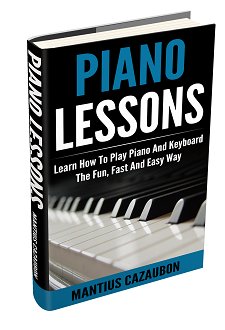Yamaha keyboard reviews: Part 1.
For the newest Yamaha keyboard reviews, click here.
Here are some terms you will come across when reading keyboard reviews. You need to know what they mean.
Many people buy keyboards only to realize later that they made a wrong choice. This is often due to the fact that they didn't give enough thought to what features they really wanted.
When you're buying a product it is often necessary to read its reviews. Likewise, if you're looking to buy a Yamaha keyboard, I would advise you to take some time to read some Yamaha keyboard reviews. Here are some features for which you may want to keep an eye open.
Highly Recommended: Go here for the BEST piano/keyboard course I’ve seen on the Internet.
#1. Polyphony
Yamaha keyboard reviews often include this term. It simply refers to the number of tones that can sound at the same time. Some of the most basic Yamaha keyboards like the PSR172 only have about 16 notes of polyphony. A professional keyboard like the Yamaha Motif would contain much more... from 62 to 128! The more polyphony, the better. On the other hand, a beginner may not need so many notes of polyphony.
#2. Graded Hammer Effect
You should look out for this feature, particularly if you want a keyboard with the feel of an acoustic piano. Yamaha digital pianos are famous for Graded Hammer Effect, a term which refers to the sensitivity found in an acoustic piano, where the keys are heavier in the lower register and lighter in the higher register. If you need a keyboard which serves as a real substitute for an acoustic piano, make sure that it has Graded Hammer Effect.
#3. MIDI
This term stands for Musical Instrument Digital Interface. It's a must have for those who want to send messages between one keyboard and another, or between a keyboard and a computer device. Today, most Yamaha keyboards come with this function. However, don't be fooled. Some MIDI features are more advanced than others.
#4. Number of keys
Reviews will tell you about the number of keys that a keyboard has, but everybody's needs are different. More keys don't usually mean better... Although those who want the closest thing to a grand piano will want nothing but an 88 key keyboard.
My personal experience is that I've selected keyboards with less keys because of prevailing circumstances. When playing with a band, 76 keys on a bottom keyboard and 61 keys on a top keyboard works fine for me. For solo gigs I normally opt for 88 keys. If you only need 61 keys don't waste money on a 76 or 88 key keyboard. Go here to shop for a Yamaha keyboard of your choice.
Yamaha keyboard reviews part two.
Read reviews of new Yamaha keyboards here.
Return to yamaha keyboards page.
Return to yamaha keyboard home page.
Search This Site:

Recommended For You
Learn to play piano and keyboards:
Click here to learn how to play keyboards and piano (with Piano For All).
Go here to buy a Yamaha keyboard.
Check out How To Read Music Fast: A 4-Step Beginner's Guide To Reading Music Quickly And Easily.





New! Comments
Have your say about what you just read! Leave me a comment in the box below.